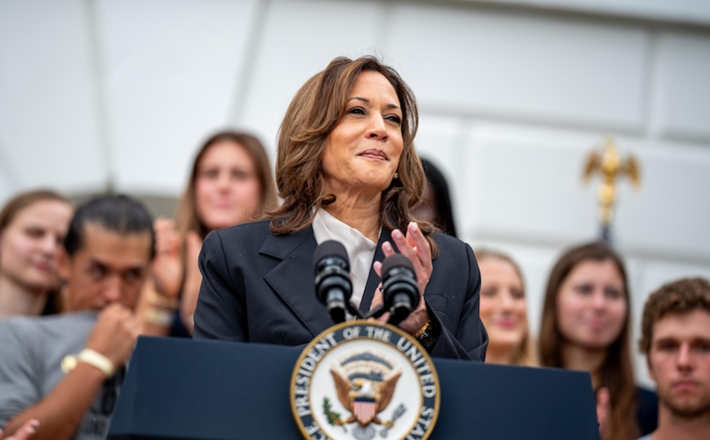A Kamala Harris candidacy will unleash unprecedented levels of misogyny — the collective response could be decisive for the future of democratic politics
Source: ABC Australia
As the 2024 US presidential election looms, Kamala Harris is emerging as a likely candidate for the Democratic Party after President Joe Biden announced his decision to drop out of the race. Harris’s potential candidacy is set to let loose an unprecedented wave of misogyny upon the American political landscape. Despite her qualifications and historic achievements, Harris will face a unique convergence of gender and racial prejudice.
Harris potential presidential candidacy can be contextualised by examining the experiences of previous female candidates, who have faced a great deal of overt and covert misogyny from across the media and political spectrum.
Bias in media reporting of women candidates
Hillary Clinton’s 2016 campaign, for example, encountered relentless misogynistic attacks, ranging from media scrutiny of her appearance to baseless accusations about her health and integrity. Throughout 2016, Clinton was frequently criticised for traits that were praised in her male counterparts, such as ambition and assertiveness.
Another prominent example is Sarah Palin who endured sexist commentary that often overshadowed her political stances during the 2008 race. As the Republican vice-presidential nominee running alongside John McCain, Palin was frequently subjected to derogatory remarks about her appearance and intelligence, and her qualifications were questioned in a way that male candidates rarely experienced.
The media’s focus on Palin’s looks, wardrobe, and personal life diverted attention from her policy positions and political record. Indeed, there is evidence to suggest that the focus on her appearance led to reduced intentions to vote for the McCain–Palin ticket in the 2008 US presidential election. Moreover, an analysis of her debate with the Democratic vice-presidential nominee Joe Biden later revealed that coverage of Palin was more likely to include references to her family, physical appearance, and social issues — particularly in newspapers and political blogs — while coverage of Biden focused more on foreign policy and the economy.
Read here the full article published by ABC Australia on 23 July 2024.
Image by ABC Australia

As the 2024 US presidential election looms, Kamala Harris is emerging as a likely candidate for the Democratic Party after President Joe Biden announced his decision to drop out of the race. Harris’s potential candidacy is set to let loose an unprecedented wave of misogyny upon the American political landscape. Despite her qualifications and historic achievements, Harris will face a unique convergence of gender and racial prejudice.
Harris potential presidential candidacy can be contextualised by examining the experiences of previous female candidates, who have faced a great deal of overt and covert misogyny from across the media and political spectrum.
Bias in media reporting of women candidates
Hillary Clinton’s 2016 campaign, for example, encountered relentless misogynistic attacks, ranging from media scrutiny of her appearance to baseless accusations about her health and integrity. Throughout 2016, Clinton was frequently criticised for traits that were praised in her male counterparts, such as ambition and assertiveness.
Another prominent example is Sarah Palin who endured sexist commentary that often overshadowed her political stances during the 2008 race. As the Republican vice-presidential nominee running alongside John McCain, Palin was frequently subjected to derogatory remarks about her appearance and intelligence, and her qualifications were questioned in a way that male candidates rarely experienced.
The media’s focus on Palin’s looks, wardrobe, and personal life diverted attention from her policy positions and political record. Indeed, there is evidence to suggest that the focus on her appearance led to reduced intentions to vote for the McCain–Palin ticket in the 2008 US presidential election. Moreover, an analysis of her debate with the Democratic vice-presidential nominee Joe Biden later revealed that coverage of Palin was more likely to include references to her family, physical appearance, and social issues — particularly in newspapers and political blogs — while coverage of Biden focused more on foreign policy and the economy.
Read here the full article published by ABC Australia on 23 July 2024.
Image by ABC Australia